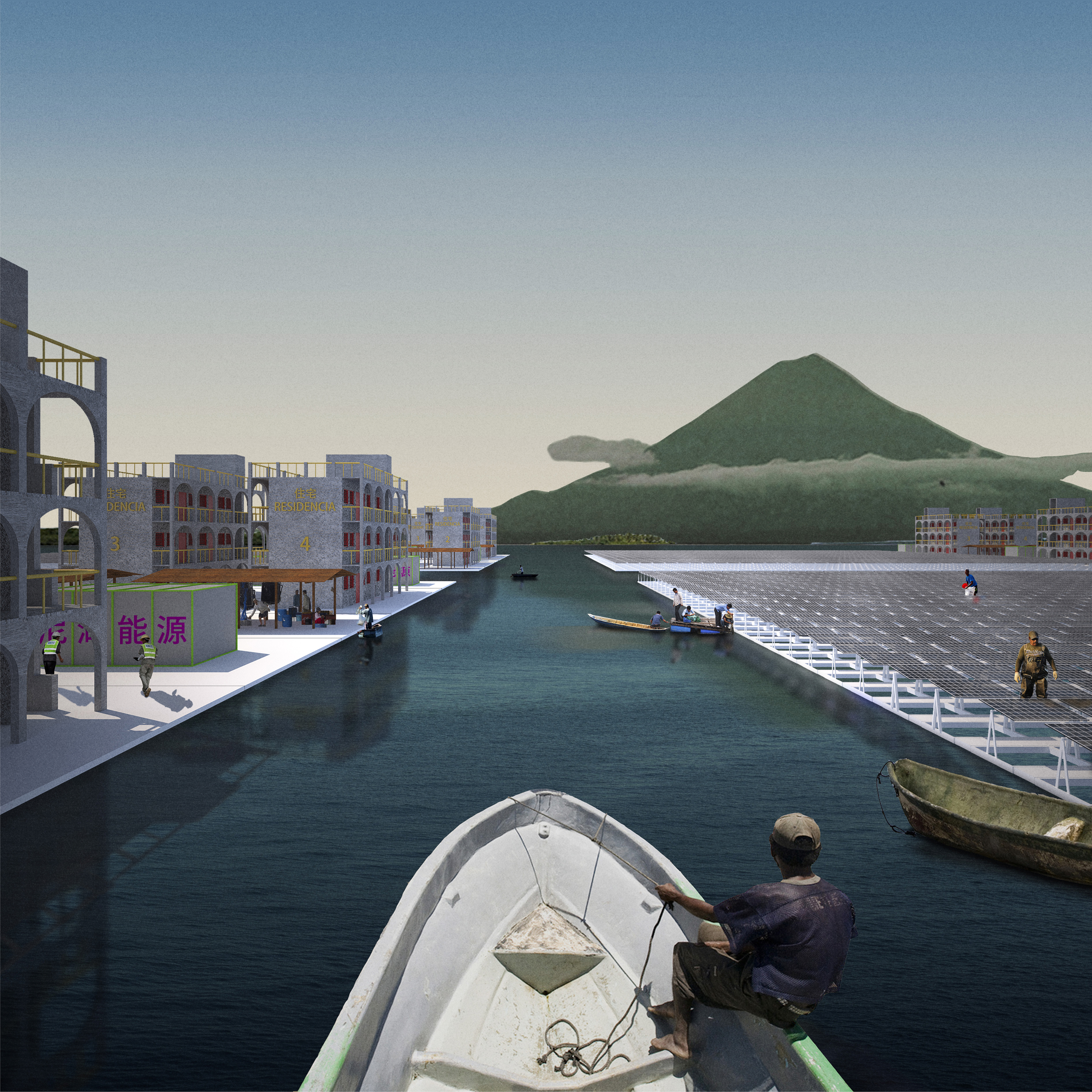The idea of an inter-oceanic canal has been a recurring dream to Nicaraguans. Meanwhile, China is slowly shifting itself from periphery nation to core nation, it moves into ‘infrastructure diplomacy’. The canal dream was brought closer to reality in 2013 by a private Chinese investor. A 100 years concession was granted by Nicaragua government as part of the investment agreemen. Daniel Ortega, the President of Nicaragua, is betting on the new canal to leverage the country out of poverty, while Nicaraguans are divided. Some want to capitalise on the canal, and the others reject it for the negative ecological and social impact.
The proposal for a manufacturing megalopolis emerges from the canal construction. Nicaragua will now be the new world factory. Unlike the Panama Canal that created a tax haven by having loose flag state regulations, the strategic values of the Nicaragua Canal will be exploited to continue China’s monopoly with low cost manufacturing.
This master plan imagines a highly efficient, automated logistics systems on import and export, an economical and cultural centre, a manufacturing zone, and a series of themed archipelagos for entertainment and tourists. The project intends to simulate the future consequence of the canal construction. In doing so, the project explores the possibility of creating new systems of manufacturing and trading in Central America and raises wider questions of the canal proposal.
These collages present different aspects of the master plan, including: connectivity, manufacturing, financial, infrastructure, tourism, local community and housing.
The proposal for a manufacturing megalopolis emerges from the canal construction. Nicaragua will now be the new world factory. Unlike the Panama Canal that created a tax haven by having loose flag state regulations, the strategic values of the Nicaragua Canal will be exploited to continue China’s monopoly with low cost manufacturing.
This master plan imagines a highly efficient, automated logistics systems on import and export, an economical and cultural centre, a manufacturing zone, and a series of themed archipelagos for entertainment and tourists. The project intends to simulate the future consequence of the canal construction. In doing so, the project explores the possibility of creating new systems of manufacturing and trading in Central America and raises wider questions of the canal proposal.
These collages present different aspects of the master plan, including: connectivity, manufacturing, financial, infrastructure, tourism, local community and housing.
Made in Nicaragua
Royal College of Art, 2017
Royal College of Art, 2017









